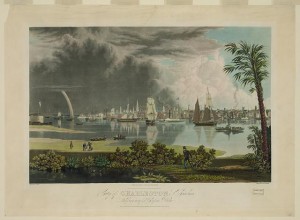Three from the Richmond Daily Dispatch September 19, 1861:
1860 was, of course, a census year. Here’s the results from a hotbed of secession.
Census of Charleston.
The Charleston (S. C.) Mercury of the 3d has the subjoined carefully compiled statement of the population of that city, just completed.
Whites, 26,859
Slaves, 17,535
Free persons 3,766
Total, 48,160
Some of those free persons took up a collection for the CSA.
Contribution from free Negroes.
The Charleston Mercury says:
The free colored men of Charleston have contributed $450 to sustain the cause of the South. The zealous and unfailing alacrity with which this class of our population have always devoted their labor and their means to promote the safety of the State, is alike honorable to themselves and gratifying to the community.
Among the several runaway notices –
Runaway–$25 Reward.
–Ranaway, in July, from the subscriber, Paul; brown mulatto color, a bricklayer and plasterer; 27 years of age; about 5 feet6 inches high; square built; bushy hair and large beard when he left; face long, and hollow about the mouth; very slightly knock-kneed; walks very erect; steps short and fast; voice loud and strong; when spoken to answers quickly; sullen aspect. He formerly belonged to Mr. Benjamin F. Whildon. The above reward will be paid to whoever will lodge him in the Charleston Work-House. Apply at this office.
You can read about the Charleston Workhouse at the University of Richmond’s History Engine. The Workhouse was established in 1839.
the Work House became a house of correction for slaves. In addition to becoming a place for the punishment of slaves who committed various offenses or crimes, the Work House was also established so that the city would have a central place for a slave market. The work house was run under Spartan conditions and in a correctional manner. Many considered it a deterrent to committing crimes. No one wanted to go to the Work House.
I think that idyllic engraving up above shows two white men managing a slave.

